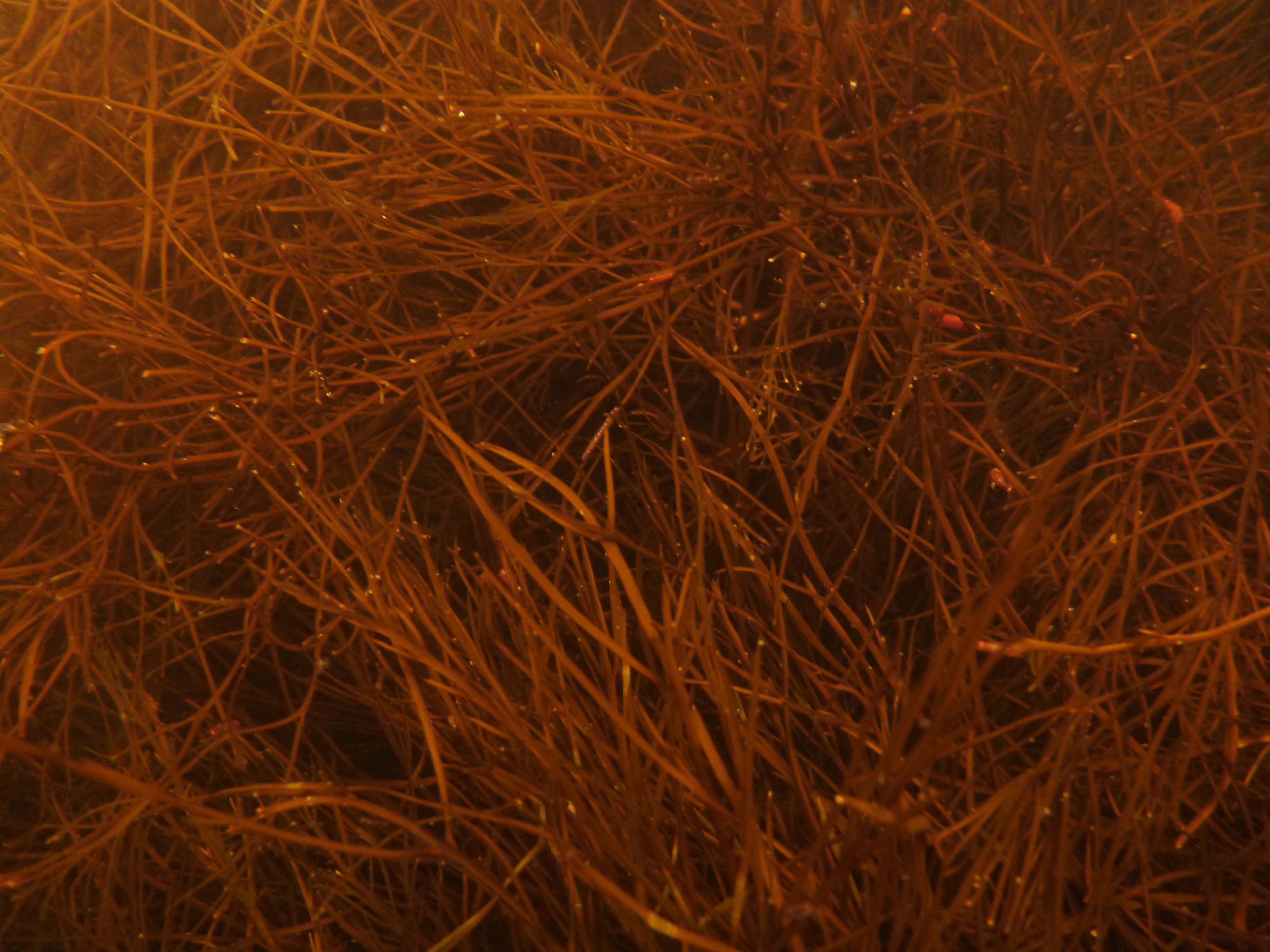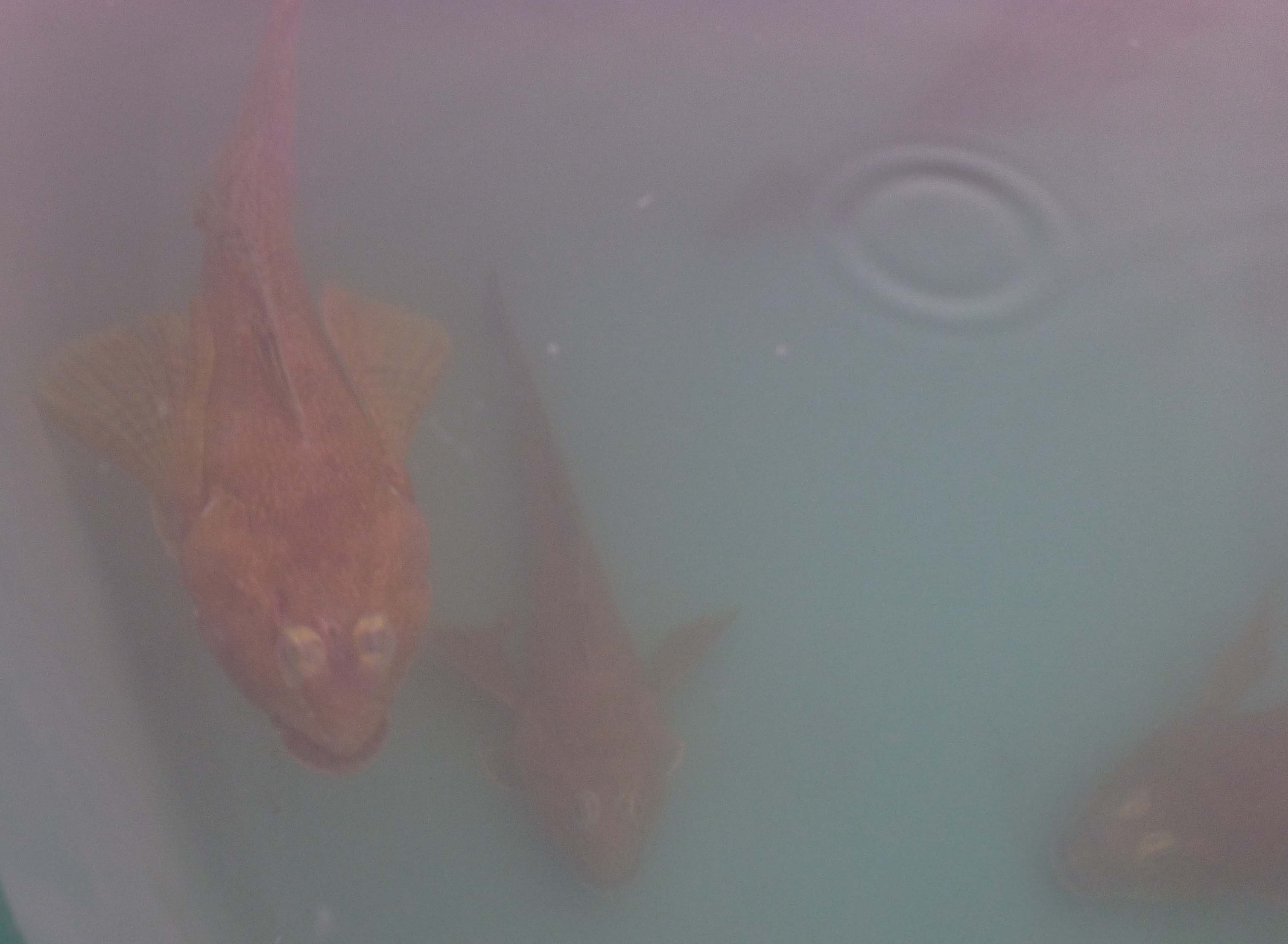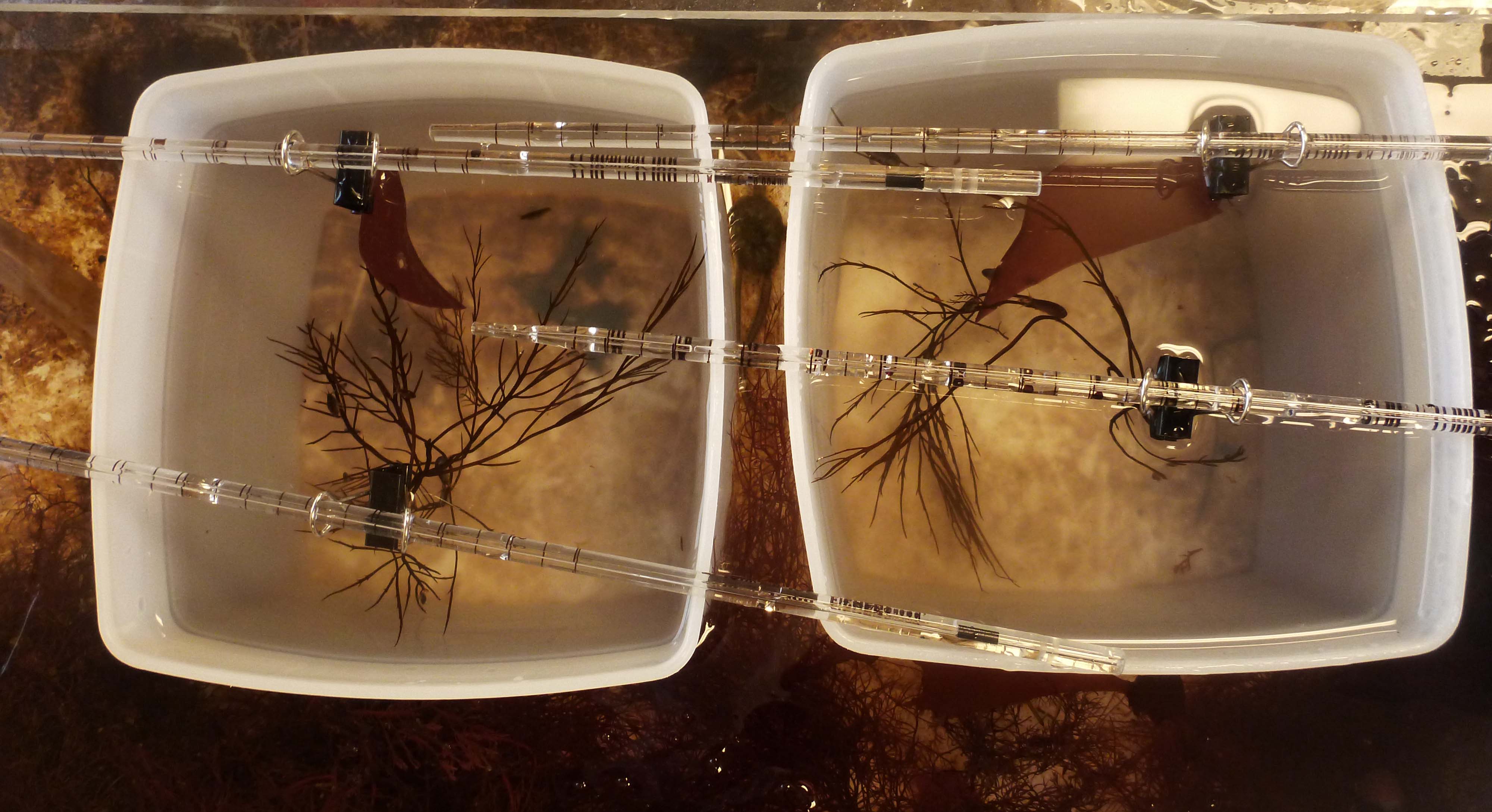
As Maggie and others have mentioned previously, one of the species I am working with this season is an omnivorous amphipod species, Gondogeneia antarctica (Gondo for short). Just as a quick reminder, these are the highly active and (if you ask me) charismatic microfauna that live on the big-branched brown algae (Desmarestia species) down here in large numbers.
By large numbers, I mean approximately 300,000 individuals per 1-meter square of algae, as one previous graduate student (Yusheng Huang) found out after many long months of counting. They are perfect candidates for my climate change experiment because even though they are small, there are lots of them and they can have a sizeable impact on community structure. Trust me - there are a lot of amphipods on the brown alga imaged above.
I am interested in measuring many aspects of the lives of the Gondo in my experiment, like how growth or behavior may be affected by the increased temperature or decreased pH. For now, let's consider these different temperature/pH treatment groups as Districts. I will have four Districts for my upcoming experiment. As Maggie previously mentioned, we are fortunate to have some fish biologists currently working at Palmer. There presence has opened up an interesting opportunity for me for me to play Gamemaker. Let me explain.

Jill Zamzow, as a post-doctorate, came to Palmer station with our lab a few seasons ago and when the project focused on Antarctic chemical ecology. Jill studied some of the things that influence when and where Gondo chooses to hang out. She did a variety of studies, but the one that interests me the most is when she introduced "predator cues" and looked at the types of algae Gondo preferred to sit on. In this case the "predator cues" is water in which fish have been maintained. She found that the amphipods change the type of algae they hang out on depending on whether or not they think they might get eaten because there may be a fish nearby.
Here is where the fish biologists come in, they are going to let me take a little water out of the giant tanks that they hold their rock cod. I will set up an experiment to test if changes in temperature and pH influence how Gondo behavior. Specifically, I will track where they will hang out when they 'think' or chemically sense there is a fish around. Thank's to Jill's research I already have a good idea of what they might do. But the proof will be in the pudding or in in this case in fishy water as you can see above!
To do this, I have set up a mini-arena into which I put 16 Gondo. I have carefully weighed out equal masses of the bladed red alga , their preferred food, and the branched brown alga Desmarestia menziesii, their preferred home. I am essentially giving them the choice of escaping into the trees for safety or running to the cornucopia represented by a large section of one of their favorite foods. I will do this with regular seawater from the aquarium tanks and seawater that has held the Antarctic rock cod, so I have my "predator cue" similar to the ones Jill used.

I then sit back and see which alga they choose to hang out on after three hours. Lucky for my Gondo, they are not really fighting for their survival or supremacy over the other Districts and there is no one winner. In fact my Districts aren't competing at all, they are all winners as soon as they catch their algae.
For the last several days I have been setting up my Games in a pilot study to test out how well this experiment will work out. So far it is promising, I am looking forward to this part of my experiment. Besides, no matter what... the odds will ever be in the favor of Gondo.
Want to know the running score? Contact us at